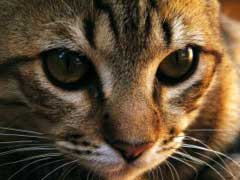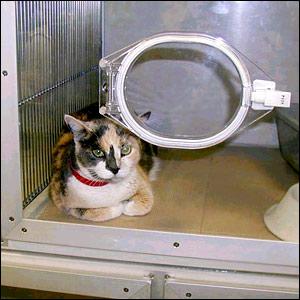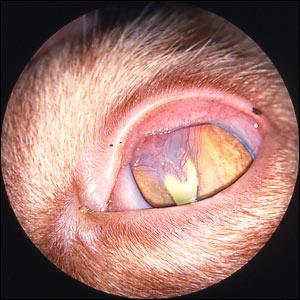
Cats
Abdominal distension is an abnormal enlargement of the cat's abdominal cavity. This term is usually reserved for abdominal enlargement due to causes other than simple obesity. For information on obesity, please read Obesity in Cats.
One cause of abdominal distension is fluid accumulation. The types of fluids include blood from internal hemorrhage (bleeding), urine from a tear in the urinary tract, exudate (cellular fluids similar to pus) from infection as with feline infectious peritonitis, and transudates (clear fluids), that are leaked from vessels.
Another cause of abdominal distension is enlargement of any abdominal organ including the liver, kidneys, or spleen. Distension of the stomach with air ("bloating") or fluid or distension of the uterus (womb) during pregnancy, can result in abdominal distension.
Tumors within the abdomen can also cause abdominal distension in cats. The tumor may be malignant (an invasive cancer), or benign, (abnormal but not spreading to other tissues). Tumors can involve any of the abdominal organs, including the intestines or lymph nodes (glands).
Loss of abdominal muscle tone, with or without significant weight gain, also can lead to abdominal distension.
Pressure from the abdomen pushing into the chest may make breathing more difficult and pressure within the abdomen may decrease the appetite. NOTE: It is important to recognize abdominal distension because it can be a symptom of potentially life-threatening diseases and should be investigated thoroughly.
Veterinary care should include diagnostic tests to determine the cause of the abdominal distension and provide information on which to base recommendations for treatment. Diagnostic tests that your veterinarian may wish to perform include:
Treatment for abdominal distension is dependent upon the underlying cause (diagnosis). Treatment may include:
 Feline Epilepsy Symptoms and Treatment
If you
Feline Epilepsy Symptoms and Treatment
If you
 Dyspnea (Trouble Breathing) in Cats
Dyspnea (Trouble Breathing) in Cats
Dyspnea (Trouble Breathing) in Cats
Dyspnea (Trouble Breathing) in Cats
 Red Eye in Cats
Red Eye in Cats
Red Eye in Cats
Red Eye in Cats
 Bald Spots on Cats
Bald Spots on Cats Bald spots are a common occurrence in cat
Bald Spots on Cats
Bald Spots on Cats Bald spots are a common occurrence in cat
 Benadryl For Cats
Benadryl For Cats Benadryl (active ingredient diphenhydramin
Benadryl For Cats
Benadryl For Cats Benadryl (active ingredient diphenhydramin
Copyright © 2005-2016 Pet Information All Rights Reserved
Contact us: www162date@outlook.com